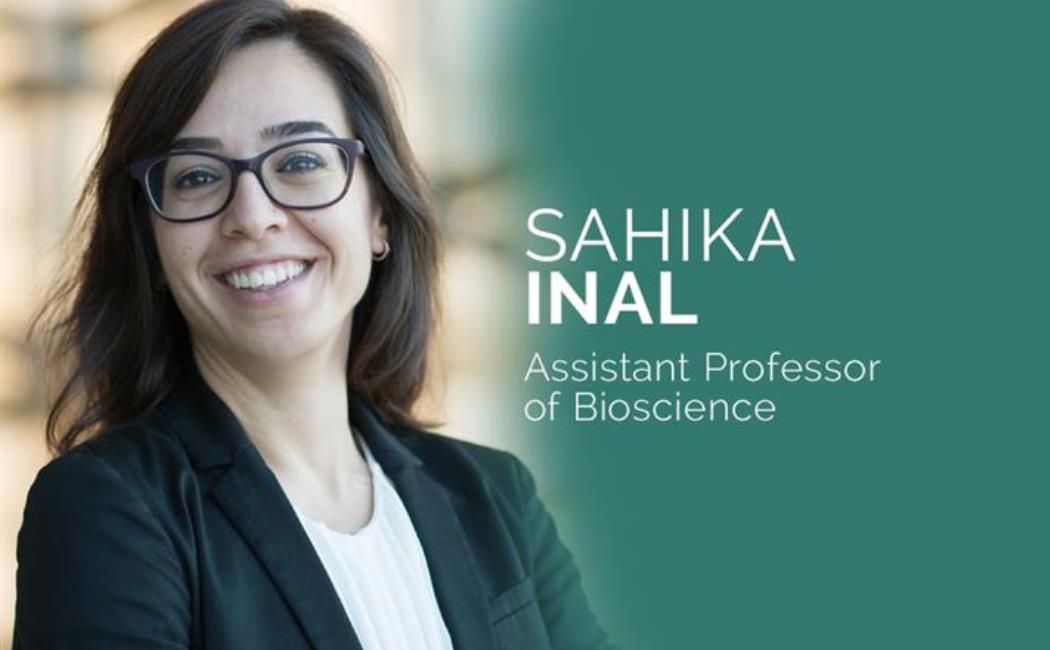
Welcome Professor Sahika Inal
06 November, 2016
The BESE Division is very excited to welcome a new Assistant Professor of Bioscience, Sahika Inal. Professor Inal joins KAUST from the Department of Bioelectronics at the Centre Microélectronique de Provence of the Ecole Nationale Supérieure des Mines de Saint-Étienne (Gardanne, France) where she worked as a Postdoctoral Fellow.
She received her B.Sc. degree in Textile Engineering from Istanbul Technical University (2007, Istanbul, Turkey), her M.Sc. in Polymer Science and Ph.D. in Experimental Physics from the University of Potsdam (2013, Potsdam, Germany). She developed a background in photophysics of conjugated polymers, optoelectronic devices, and polymer structure-device performance relations. During her doctoral studies, she worked on the development of smart polymer-based biosensors for easy diagnostics of pathogens with a fluorescence output.
We had a short interview with Professor Inal, where she answered questions about her research, her motivations for coming to KAUST and the delights of discovering the unknown.
What are your research interests?
My research is in the field of “organic bioelectronics”. Bioelectronics develops electronic devices that can interface with living tissue, for detection and/or treatment of diseases. These devices might include an implant that goes into the heart and regulates the heartbeat or when placed in the brain, via drug delivery or electrical stimulation, alleviates symptoms of a neurological disease. These devices can as well pick up signals from living tissue, which are then used to build sensors. The common property of all bioelectronics devices is that they have electronic communication with tissue. Traditionally, electronic communication involves hard and rigid electronic conductors such as metals. But, living tissue is a soft material, an electrolyte which communicates through movements of ions. These mismatches cause poor communication between electronic devices and the tissue and therefore the devices are likely to fail. In our lab, we instead employ organic electronic materials that are carbon-based semiconductors, to interfacing the living tissue. These materials transport electrons like a metal, but are also ionically active like biological molecules. They soften as they interact with the body fluid. They have been suggested for the biotic interface in the 90s by leading groups such as of R. Langer, D. Martin, and G. Wallace. Inspired by their findings, our group leverages the properties of organic electronic materials to design implantable and in vitro sensing and stimulation platforms with unique capabilities.
What motivated you to come to KAUST and the BESE Division?
I started my career in Istanbul (Turkey) at the Textile Engineering Faculty of Istanbul Technical University, specializing in fiber chemistry, processing, and textile machinery. My interest in polymer engineering research encouraged me to move to Germany, where I completed a master’s degree in Polymer Science. During this time, I have discovered the world of polymers and organic functional materials and got into the engineering of these materials to be applied in electronic and/or optical devices such as solar cells and sensors. Among the applications of these materials, I got mostly fascinated by their use in biology at the interface with life sciences, by the way how they can interact with cells, proteins. Upon completion of my doctoral studies at the University of Potsdam (Germany), which was on polymer-based pathogen sensors, I moved to Microelectronics Center of Provence (France) to learn about how to design polymer based micronscale electronic devices that can interface living tissue.
As a polymer scientist and engineer, I have been up to date with the relevant research and innovations at KAUST and have been aware of the world-class KAUST scientists. Moreover, I was convinced that the facilities, collaborators and the research environment at KAUST provide most of the necessary ingredients for a young scientist as myself to grow. Therefore, KAUST has been a natural next step in my career. I work in close coloration with chemists who design innovative materials and with biologists who actually come up with problems that excite all of us. I like dealing with problems that are vital for human health and that concerns a wide audience, and this is very relevant to biology. With a great collection of faculty who are open to sharing their knowledge and ideas with an engineer having a genuine interest in biology as myself, I know that BESE is the right place to be.
What makes your research relevant to the Division and the Kingdom?
As its name suggests, organic bioelectronics is a truly interdisciplinary field. Since I develop electronic materials and devices that can communicate with living tissue, my research is quite relevant to our division. For a plant scientist, for instance, who is interested in finding novel ways to measure ion concentration in the plant without disturbing its function, organic bioelectronics can provide a sensor. Or, we can develop a functional polymer that can mimic the tissue and control the behavior of cells within, which is detrimental for most of the in vitro tissue model work. Bioelectronics is a field that can offer new solutions for healthcare; which is why it generates great promise and hype. The use of electronic devices and materials in vitro or in vivo has the potential to impact the quality of life of people worldwide, including the ones in the Kingdom.
One of the pleasures of scientific research is discovering the unknown, what drives you to discovery?
I will quote the very same statement that one of my mentors likes to quote: “Those who dominate materials dominate technology”. This is an excellent statement and highlights the importance of materials research. I am delighted to (re)discover the wonders of organic electronic materials that would be the basis of innovative healthcare tools used for diagnostics and therapy. These materials can be very interesting for biologists and their communication with cells fascinates me as I get to learn new aspects of biology. And this outsider look, I think, leads the way for discovery.